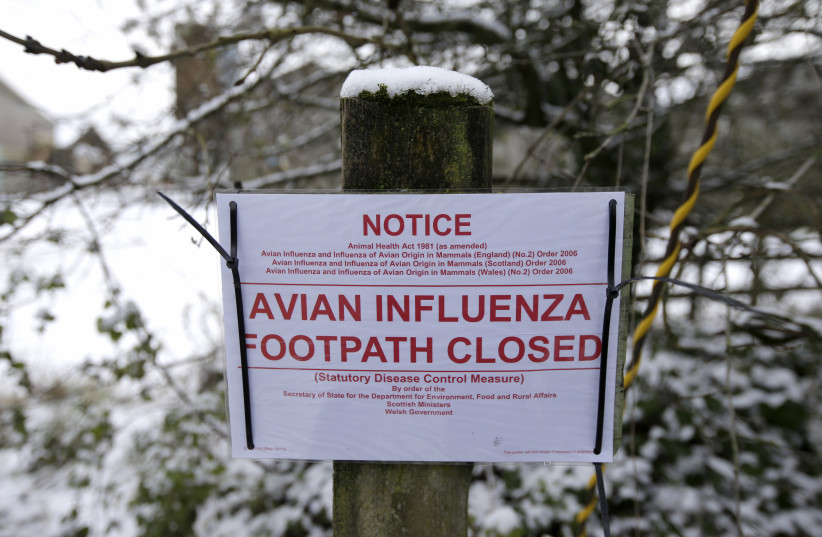Two gulls were found infected with the H5N1 subtype of Highly Pathogenic Avian Influenza (HPAI) near Binyamina-Givat Ada and Holon last week, the Agriculture Ministry said on Saturday.
The ministry added that at the beginning of January, a common teal was found infected with the virus in Bet Halevi, near Netanya, and a peregrine falcon was found infected near Hulata in northern Israel.
The outbreaks are the latest reported this season in Israel. Several other outbreaks were reported late last year, with the first outbreak of the season reported in September at a petting zoo including over 200 peacocks, geese, ducks, guinea fowls, chickens, doves, and parakeets in Sde Ya'akov in northern Israel.
Since 2021, Europe and the Americas have been suffering from a nearly continuous outbreak of H5N1 avian influenza which has been described as "the largest-ever" on the three continents. The virus has affected tens of millions of birds and thousands of mammals worldwide. Outbreaks of the virus have also become more common in Africa and Asia in the past year.

In Cambodia, two cases of H5N1 bird flu have been reported in humans in the past month. The first case was reported in a three-year-old boy last week in the Prey Veng province of southeast Cambodia. On Sunday, a 69-year-old man in the Siem Reap province of northwestern Cambodia was found to be infected as well.
Both the three year old and the 69 year old were in intensive care. The older man had been raising dozens of chickens before falling ill. The boy lived in a village where chickens and ducks had died.
Bird flu an 'existential threat to the world’s biodiversity' - WCS
Dr. Chris Walzer, executive director of health at the Wildlife Conservation Society, called on governments internationally to "treat this growing crisis with the urgency it demands," earlier this month.
“H5N1 now presents an existential threat to the world’s biodiversity," warned Walzer. "It has infected over 150 wild and domestic avian species around the globe as well as dozens of mammalian species. The bird flu outbreak is the worst globally and also in US history, with hundreds of million birds dead since it first turned up in domestic waterfowl in China in 1996."
“Globally, HPAI H5N1 has now infected many mammals—including foxes, pumas, skunks, and both black and brown bears in North America," added Walzer. "Sampling efforts suggest that more than 95 percent of the Southern elephant seal (Mirounga leonina) pups born along 300 km of the Patagonia coastline died at the end of 2023. It’s the first report of massive elephant seal mortality in the area from any cause in the last half-century. The sight of elephant seals found dead or dying along the breeding beaches can only be described as apocalyptic."
“The cost of inaction is already causing major devastation to wildlife. As we work to help affected populations recover, we must remain vigilant against the spread of this deadly pathogen to people before it’s too late.”
